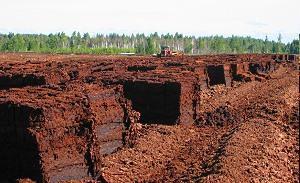Organic fertilizers (peat)
 Peat - purely organic fertilizer... It meets all environmental requirements, as it is formed naturally, thanks to natural processes. Gardeners have found a wide variety of uses for it.
Peat - purely organic fertilizer... It meets all environmental requirements, as it is formed naturally, thanks to natural processes. Gardeners have found a wide variety of uses for it.
There cannot be a lot of peat in the ground, it is not superfluous for plants. Experienced summer residents think so. Peat can be used as a separate fertilizer for feeding vegetable crops in beds, or berry bushes and trees. Often added to compost heaps to balance the elemental composition of future humus.
Also, to increase yields, the trunks of old fruit trees are mulched. Increase the number humus in the soil (in the country, or in the garden), very simply due to the introduction of peat. It is necessary not to bury it in the ground, but to scatter it over the surface of the site. Convenience is that this procedure can be performed at any time of the year.
After the introduction of peat, the plants quickly and efficiently develop the root system. And, both the growth of the plant and the future harvest depend on the roots.
It happens that in the fall, during the processing of the site, the gardener does not have peat, and the soil is already depleted. It doesn't matter, you can add peat in the spring, but already in the form of mulching the beds.
It is recommended to spread peat together with manure when composting. Any type of peat can be used here: low-lying, high-moor and intermediate (transitional between them). If composting is done in layers, then manure and peat should be stacked adhering to the ratio, from 1: 1 to 1: 8. These ratios are the most optimal and are confirmed in practice by the gardeners themselves.